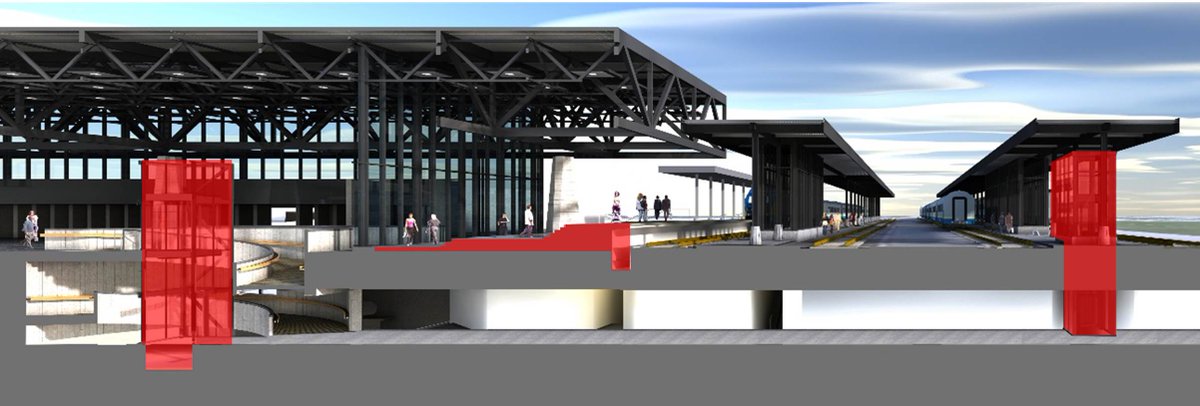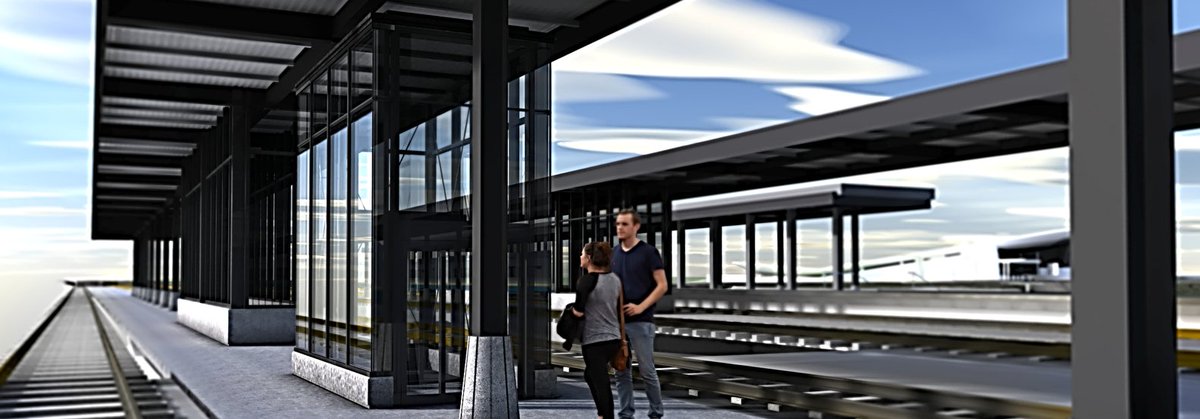C0ntext: Earlier topic of "On-the-fly" customs clearance on a moving train between Canada-USA necessitating technology and political improvements before it can happen...
It's Canada promoting cross border travel and trade, not the US. This subject will remain problematic, and ex-Senator Clinton, even as a NY senator, was brutal on the issue. She's most likely the next US President.
Granted, it's going to be difficult, but at some point in a decade, or two decades, or later this century. The difficulty of cross-border travel has waxed and waned over the decades.
The cost isn't that bad. Average 1000 people per day for the Toronto-NYC route paying a $5 fee (now faster than driving, even without raising rail speed limits), is $5000 per day. $2500 per day paid to U.S. customs for the cost of sending staff to Toronto, with the other $2500 for rest (paying off capital cost of initiative). That's a million dollars per year repayment. Or even bump to $10, and consider all borders -- that may be $5M per year, repaying a $50M capital. That's only the Toronto-NYC route, there are other routes that can benefit from this (Montreal, Vancouver). Some customs have already started using mobile clearance equipment at border crossings, and the very same equipment may also be usable on the train as well.
The capital cost of such a theoretical initiative is constantly falling thanks to simpler technology. Dash cameras can now be had for only 20 dollars off eBay, and cameras are literally a free part of a smartphone nowadays. The bluetooth barcode scanner that VIA uses, is also available on eBay for computer-accessory-like prices (about a hundred dollars). The technology glue is gradually becoming simpler. Yesterday, in the 1990s, the thought of seeing a World Map Atlas with millions of realtime traffic points and public transit routing (open data fees) -- was science fiction dreamland but is here (Google Maps) and is free for use by any car driver (Google Navigation) even driving past international borders. Today, even small towns now can afford to put up a website that handles stuff like speeding ticket payments -- pay directly from home in a town of less than 50,000 -- the cost of designing an ecommerce website has dramatically fallen thanks to off-the-shelf website components. Tiny mom-and-pop credit unions now support Interac Email Money Transfer, formerly an IT megaproject that only was done by the Big Five. The cost of doing the technology megaproject will eventually be doable this century.
Software is becoming more modular. We even observe websites such as
www.ttc.ca running an embedded version of TransitApp. Government websites now embed YouTube videos (saves lots of money) and Google Maps (saves lots of money too). Social feeds now prevent governments from having to develop expensive discussion board software. Et cetra...
I've been working in information technology for more than 20 years. Programming, mobile apps, mapping stuff, websites, etc.
Government projects do somewhat raise costs given stricter requirements and bureuacracy, sometimes ending up in what appears to be ridiculous waste and cost-overruns to a highly newsworthy billion dollars. But many have actually been done on the relative cheap and still successfully, in the million league, or ten-million dollar league, some projects nearly as complex as the project I am suggesting, have been done and doable at well under $100M. Thanks to modules and reusable components that have now been standardized. Those successful few-million-dollar projects are the stuff that do not show up as scandals in the news.
Between all borders, to pay off this initiative, it is less than 10 trains needing to be equipped with on-the-go customs clearance, using off-the-shelf components. The off-the-shelf hardware cost is now relatively tiny, except for specialized hardware such as the door integrity seals which may end up even cheaper. One big issue is the cost of integrity verification. But there are even parts for that -- instead becoming smart doorway cameras not too dissimilar from existing WiFi home security camera products costing a couple hundred and quickly falling -- and ruggedized/secure versions exist too. If cheap and trustworthy enough in the future, smart wireless doorway camera at every train doorway could then instead double as the doorway integrity seal (and not just for audit). Failed/tampered cameras would just result in manual inspection as today, so they would need to be failsafe and reliable.
They might decide cameras are not needed, and use simpler integrity seals like security stickers or security locks. Then zero hardware needs to be installed on the trains. But even with camera (no wires, except for power wire which could come from the overhead train light for simpler installation), it is mostly IT/programming/securing cost rather than hardware cost.
Baggage scanning is a consideration although this is done on a much more lightweight basis than for air and I would hopefully expect that to continue without onerous mandatory airport-xray for everything. That would dramatically raise cost, but many solutions abound (random screen, full prescreen, border xray of checked baggage, future full-vehicle scanners like they're inventing for trucks and freight containers), mobile scanners exist (albiet still more limited than xrays) for on-the-go scanning, and future solutions may come up as well.
It may not be doable politically now, but at some point, politics becomes the only limiting factor -- not the cost and technology -- to achieve on-the-go customs clearance on a moving train -- 100% funded by train ticket surcharge repaying a mere 10 year loan.
What's simply needs to be proven is to make sure technology can make on-the-go clearance can actually provide more secure custom clearing than pre-clearance. Consider customs now has more time, as in 1.5 hours (Toronto-to-Niagara) with all passengers -- rather than having to quickly clear people.
Once that happens, that technology is trusted/secure enough -- then customs/politicians loves the idea, it becomes politically easier if on-the-go clearance is successfully made more secure than doing pre-clearance.









